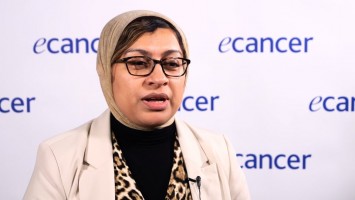Active surveillance for oesophageal cancer shows improved HRQoL compared to standard surgery
Dr Berend Van der Wilk - Erasmus MC Cancer Institute, Rotterdam, The Netherlands
The day before yesterday we had the privilege to present the results of the SANO trial here at the ESMO Congress. We see that the standard treatment for oesophageal cancer is neoadjuvant chemoradiotherapy followed by an oesophageal resection. We also know that an oesophageal resection is a major surgical procedure resulting in mortality, morbidity and a decrease in health-related quality of life. We also see that after neoadjuvant chemoradiotherapy nearly one-third of the patients have a pathological complete response which imposes a dilemma of whether or not all patients need standard surgery after neoadjuvant chemoradiotherapy or should we be willing to perform an organ-sparing active surveillance strategy for patients who respond well to neoadjuvant chemoradiotherapy. So that was the aim of the current study where we compared neoadjuvant chemoradiotherapy followed by active surveillance versus standard surgery for patients with locally advanced oesophageal cancer.
We performed a phase III closely randomised trial and included patients who underwent neoadjuvant chemoradiotherapy according to the CROSS regimen which consists of paclitaxel and carboplatin. Then we randomised according to a closely randomised fashion the patients to active surveillance or standard surgery. All patients who were included had a clinically complete response which means that we couldn’t detect any vital residual tumour cells 12 weeks after the completion of neoadjuvant chemoradiotherapy using endoscopic bite-on-bite biopsies, endoscopic ultra-sonography and PET CT.
We included 309 patients in total. The primary endpoint was overall survival and secondary endpoints included disease free survival, operative and pathological outcomes and health-related quality of life. The major findings are concerning the primary endpoint of overall survival, that patients undergoing neoadjuvant chemoradiotherapy followed by active surveillance had a non-inferior overall survival at two years compared to patients undergoing standard surgery. The same was true, at least for statistical significance, for the disease free survival and the distant metastasis. So we saw that there was no statistically significant difference in disease free survival or in the rate of distant metastases between those two groups. Patients undergoing active surveillance had a better health related quality of life six and nine months after the completion of neoadjuvant chemoradiotherapy compared to standard surgery.
Finally, we believe that nearly one third of the patients have a persistent clinically complete response and do have benefit from this active surveillance strategy and could avoid a non-beneficial oesophagectomy. So those are the results summarised for SANO.








